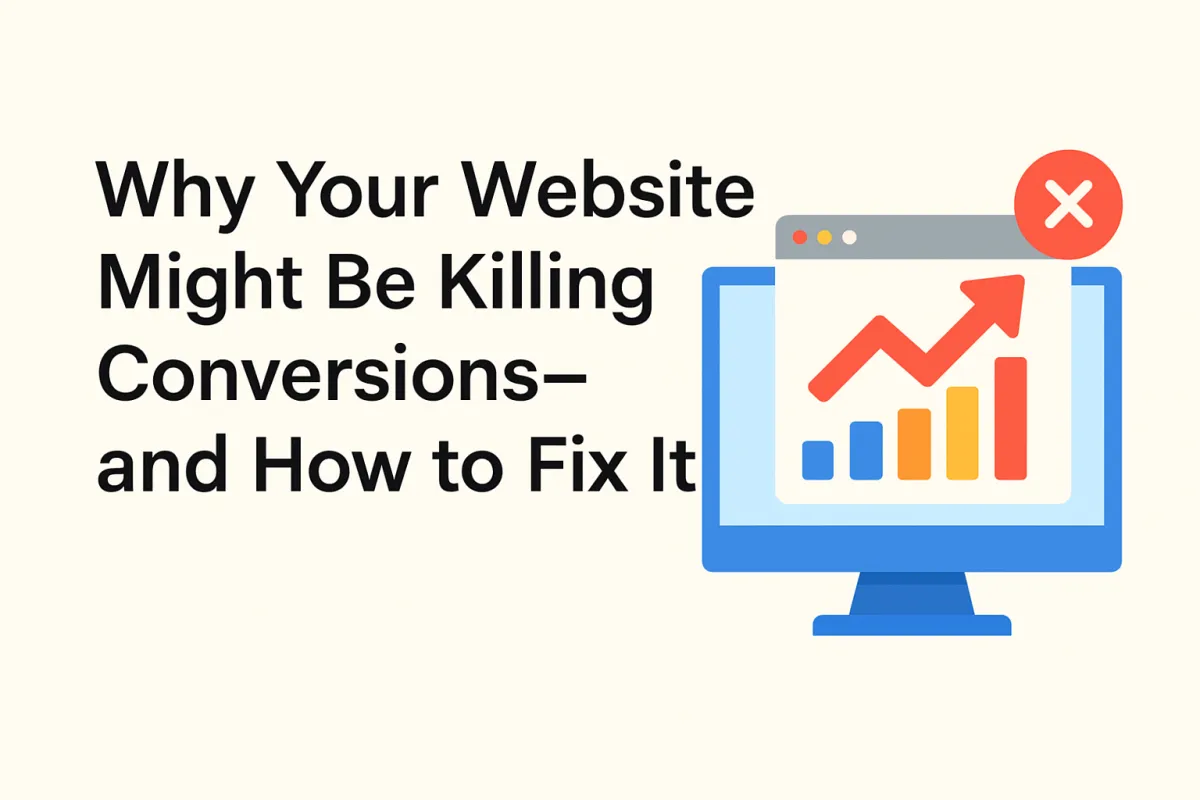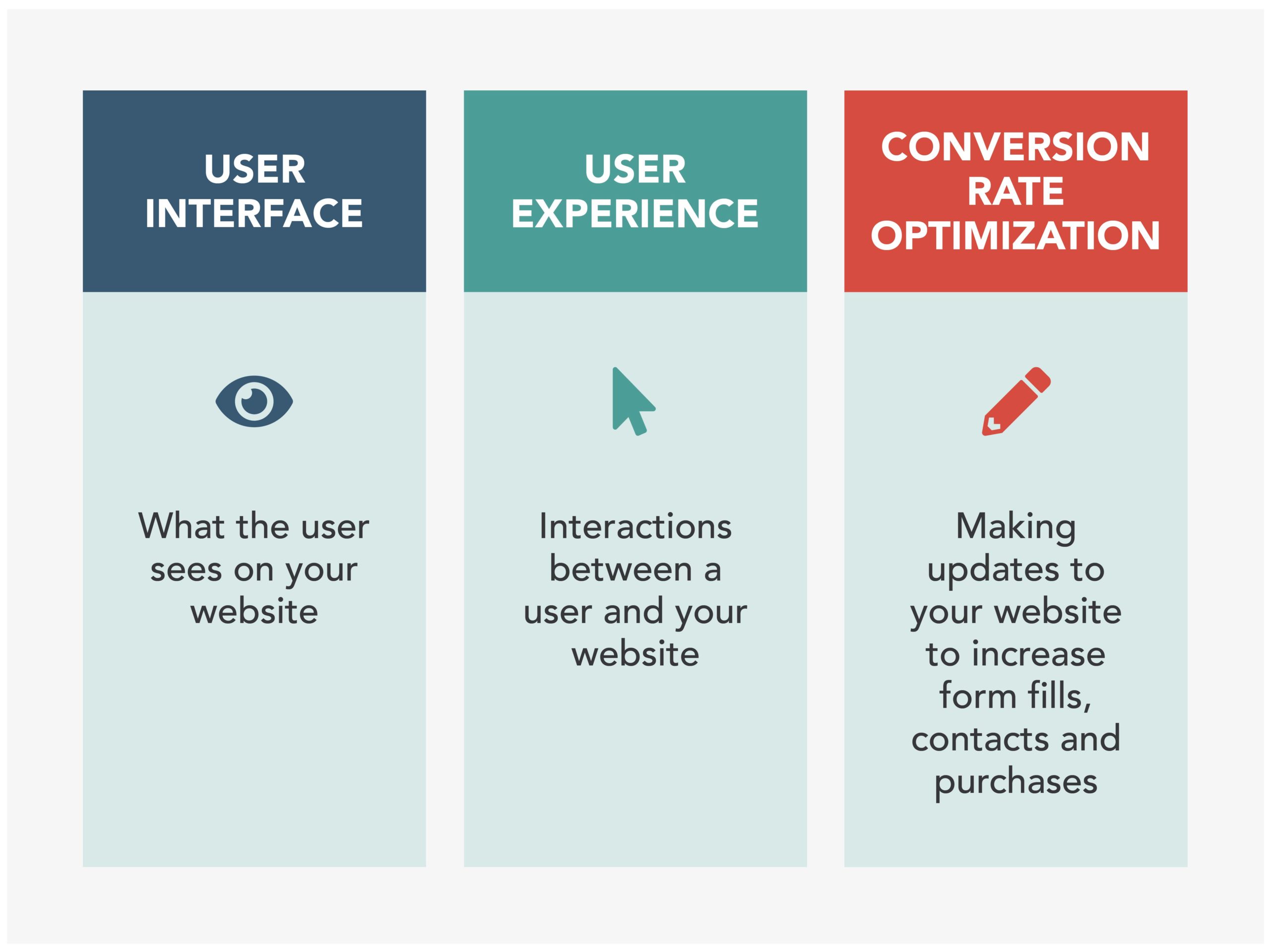
"Why Your Website Might Be Killing Conversions—and How to Fix It"
Introduction
Think of your website as a bustling storefront on Main Street. You’ve got bright signage, foot traffic streaming by, and a great product inside — but if the door is hard to open, the lighting is dull, or the cashier is nowhere in sight, people might just walk out without buying. That’s what a website with poor conversion rate does: a lot of traffic, few sales. In this post, we’ll dig into why that happens and show you how to turn those passers‑by into buyers.
Here’s what you’ll learn: the top reasons your website isn’t converting, key statistics to put it all into context, and concrete fixes you can apply right away.
1. The Hidden Leaks in Your Funnel: Why visitors leave without converting
It’s tempting to focus just on attracting traffic, but if your site isn’t built to convert, you’ll leak value at every step. According to one source, the average website conversion rate across all industries is roughly 2.9%.
In other words: out of every 100 visitors, maybe 3 take the action you want.
One major culprit? Site speed. Sites that load in 1 second versus 5 seconds have 2.5‑5x higher conversion rates.
If your visitors are waiting… they’re gone.
Tip: Use tools like Google PageSpeed or GTmetrix to check your page load time, and aim for under 3 seconds — ideally under 2.

2. Clear Pathways and Persuasive Prompts: The power of UX and CTAs
Imagine walking into a store, but instead of seeing a checkout desk you find three aisles with no sign of where to pay — frustrating, right? On your website, unclear calls‑to‑action (CTAs), confusing navigation, or too many distractions distract visitors and reduce conversions.
Sites with strong UX convert at 4.5% vs around 2.6% for poor UX. Also, the top 10% of landing pages convert at 11.45% or higher. So if your site is below the 3% average, you’ve got room to improve.
Tip: Make your primary CTA bold and visible. Remove clutter around it. Make the next step obvious (e.g., “Get your free audit” rather than “Learn more”).
3. Mobile Matters More Than You Think
Mobile traffic has been growing for a while – but conversion on mobile often lags behind desktop. For example, a one‑second delay on mobile can drop conversions by up to 20%. Since many visitors are on phones, your mobile experience might be leaking conversions without you realizing it.
Tip: Test your site on mobile devices. Ensure buttons are tappable, the layout is clean, and the checkout or form process is simplified. Speed matters even more here.
4. Trust Signals & Social Proof: Why people hesitate to convert
When someone first comes to your website, they’re often skeptical—“Can I trust this business? Will it work for me?” Without trust, conversions stall. Incorporating testimonials, case studies, security badges, or reviews can boost conversions significantly — some data shows up to a 32% increase when social proof is present.
Tip: Highlight 2‑3 real customer stories near your CTA. Use photos if possible, and keep them short and credibility‑rich (“We increased our leads by 45% in 6 months with [your service]”).
5. Test, Measure, Optimise: The mindset of high‑performers
High converting websites don’t happen by accident. They happen by testing, analysing, adjusting. For example, A/B testing has been shown to lead to significant conversion lifts. Without data you’re flying blind — what you think works may not.
Tip: Pick one page (your highest traffic or key funnel page) and test a change: button colour, headline, or hero image. Run it for enough visits to be confident, then roll in the winner.

6. Don’t Overload – Simplify This Funnel
Here’s a hidden trap: many websites try to shout about everything at once — features, benefits, blog, podcast, latest news… and the visitor gets overwhelmed. Data shows that landing pages with fewer than 10 elements outperform those with 40+ elements. Keep your funnel lean: clear message, minimal distraction, one path to conversion.
Tip: Audit your highest‑traffic page: remove any non‑essential elements (sidebar, unrelated links, extra form fields). Make it clean, focused on the goal.

7. Align Traffic with Intent: Not all visitors are equal
Traffic is great, but if it’s the wrong type of traffic, conversions will struggle. Suppose your campaign attracts curious browsers but not decision‑makers—they may leave without converting. Benchmarks show some traffic sources convert better than others: direct traffic averaged about 3.3% conversion compared to social media’s 1.5% in one study. Ensuring your traffic aligns with your conversion goal is just as important.
Tip: Review your analytics: which traffic sources are converting best? Double down on those. For lower‑performing channels, consider adjusting messaging or offer to better match user intent.
Conclusion
To bring it all together:
Average conversion rates hover around 2–3 % — meaning there’s room for dramatic improvement.
Speed, UX, mobile‑friendliness, trust signals, focused design, and testing all play big roles.
Constantly measure and adjust — you’re not “set it and forget it.”
When you tighten your funnel, remove the distractions, and speak clearly to your visitor’s needs—you turn that storefront traffic into real purchases.
You’ve got this. If you start implementing these tips, you’ll stop letting potential customers slip away and begin capturing more of the value you work so hard to bring in. Let’s flip the script: your website should be closing deals, not killing conversions.
